Contents
Growing pepino at home is not difficult, but rather unusual. Seeds have already appeared on sale, but there is little information. So domestic gardeners are trying to master all the tricks of growing pepino on their own, and then they share their experience on the forums. Meanwhile, the conditions, for example, in the Krasnodar Territory and in the Urals are different, and ridiculous mistakes are made. And the culture is simple, there are simply rules, deviating from which it is impossible to teach the harvest at home.
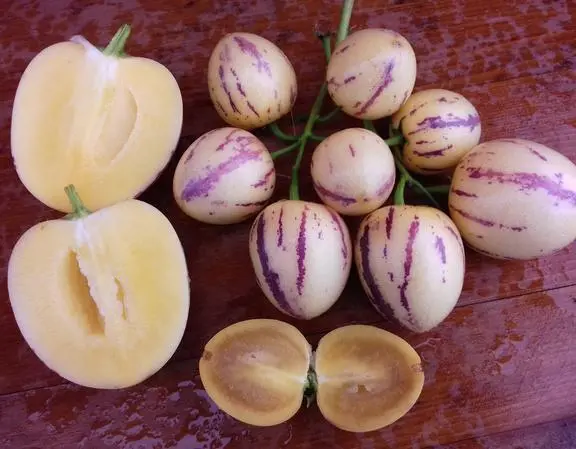
What is pepino
The melon pear or Pepino belongs to the Solanaceae family. It originates from South America and is grown in warm or temperate countries for its edible fruit. Unlike other nightshade crops, unripe pepino berries are edible, taste like cucumber, and are used as vegetables. Well-ripened fruits are similar in aroma and taste to cantaloupe.
Pepino is a perennial woody shrub at the base with a height of more than 1,5 m. Some varieties can reach 2 m when grown in a greenhouse. Pepino forms many side shoots and quickly gains green mass. Its leaves are the same as those of pepper. The flowers are similar to potatoes, but are collected in brushes, like a tomato.
Fruits weighing from 150 to 750 g, as in some varieties of eggplant, pear-shaped or flat-round. They vary in color, size, shape, and are often yellow or beige, with purple or purple vertical streaks. White or yellow flesh is juicy, aromatic, sweet and sour. There are very few small seeds, sometimes none at all.
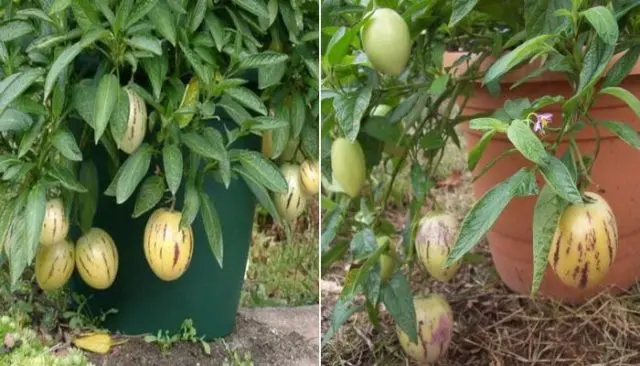
Features of growing pepino
Reviews about pepino vary dramatically. Some consider growing a melon pear as easy as other nightshade crops, while others argue that it is difficult to wait for a harvest. This is due to the fact that some gardeners do not bother to study the needs of the plant. They don’t even always read the label before germinating the seeds. Meanwhile, if you do not create suitable conditions for pepino, it will constantly drop leaves, flowers and ovaries. Its growing requirements are very strict.
What you need to know about pepino:
- This is a short day plant. Pepino for flowering and fruiting, it is necessary that the dark time of the day lasts at least 12 hours. Oddly enough, such needs are mainly found in tropical and subtropical crops. The fact that tomatoes, peppers, eggplants are planted in the sun, and they safely yield until autumn, is explained by long and diligent selection. Pepino, on the other hand, has strict requirements for lighting. Moreover, it is impossible to plant it in partial shade – the culture needs a lot of sun, but not for long. On a large bush, fruits may be set where the flowers are covered with leaves, or on the side shaded by other plants.Comment! Someone may argue that pepino is most often grown in countries with a tropical climate, and there daylight hours are much longer than ours. This is true. They just plant it so that the period of fruit set falls in the winter.

- Although pepino is a thermophilic culture, at temperatures above 30⁰ C, it sheds flowers and ovaries. And not necessarily everything, because of which gardeners may consider that it was not they who made a mistake, but the plant is acting up. In fact, the ovaries usually remain inside the bush or on the side that is constantly in the shade, and there the temperature is slightly lower.Important! At a temperature of 10⁰ C, pepino may die.
- Those fruits that started before the end of May should not fall, unless, of course, there is extreme heat. They fill up and grow in size.
- Pepino takes 4-5 months from germination to harvest.
- Melon pear blooms with brushes, up to 20 buds on each. This does not mean that all of them will bear fruit, even with the right agricultural technology. In adult plants planted in a greenhouse, from 20 to 40 berries can reach ripeness. For pepino grown in a greenhouse, 8-10 large fruits are considered a good result. The same result can be achieved at home, on the windowsill. Small-fruited specimens will produce more berries.
- When sowing seeds, pepino splits. This means that, even if you collect planting material from one fruit, grow it, harvest it, the berries in different bushes will differ not only in size, but also in taste. It is believed that specimens grown from cuttings are better than those obtained from seeds. And the fruits formed on the stepchildren are sweeter than those collected from the main stem.
- Often on the Internet or in print media you can find the statement that the germination of pepino seeds is almost 100%. It is not true. Biologists assess the ability of melon pear seeds to germinate as low.
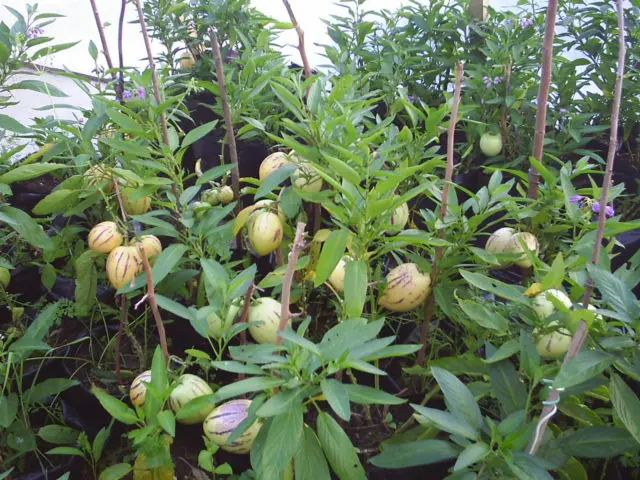
Varieties of melon pear adapted for cultivation in Our Country
To date, more than 25 varieties of pepino have been created, and the number is growing. In the greenhouse, you can grow any cultivars, only there you can create ideal conditions for a melon pear. Two varieties are recommended for greenhouses and open ground in Our Country – Israeli Ramses and Latin American Consuelo. It’s pretty easy to tell them apart.
You can learn more about the Pepino and Consuelo varieties, the appearance of the fruit by watching the video:
Pepino Consuelo
The variety was accepted by the State Register in 1999, recommended for cultivation in film, capital greenhouses and open ground throughout Our Country. Pepino Consuelo is an indeterminate plant with purple stems, more than 150 cm tall, forming many stepchildren. Small leaves with a solid edge are light green.

The flowers are white or white with purple stripes, similar to potatoes. Reviews of the pepino Consuelo melon tree claim that only striped ones form the ovary, monochromatic ones crumble.
120 days after germination, the first fruits weighing from 420 to 580 g ripen. When fully ripe, their color is yellow-orange, vertical purple or lilac stripes and strokes pass along the sides.
The shape of the fruit resembles a heart, the top is blunt, the skin is thin, smooth, the surface is slightly ribbed. The walls are up to 5 cm thick. Light yellow flesh is sweet, juicy, soft, with a strong melon flavor.
The yield of commercial-sized fruits in heated greenhouses reaches 5 kg per sq. m. The germination of high-quality seeds is 70-80%.
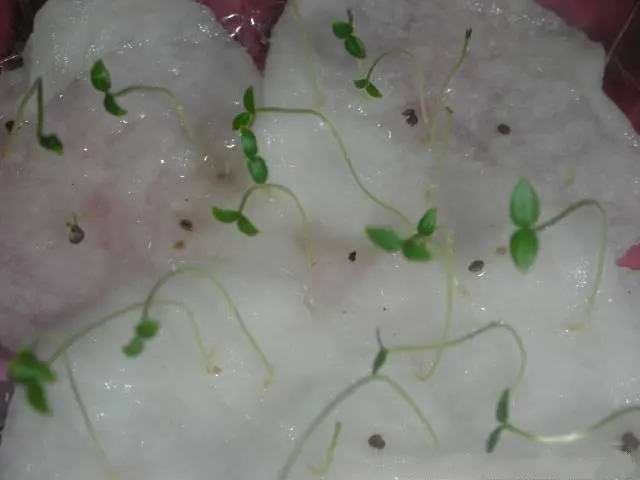
Pepino Ramses
Pepino Ramses melon tree, the cultivation of which is recommended throughout Our Country, was registered by the State Register in 1999. This is an indeterminate plant above 150 cm. The shoots are green, with purple spots, the leaves are medium, with a solid edge, dark green.
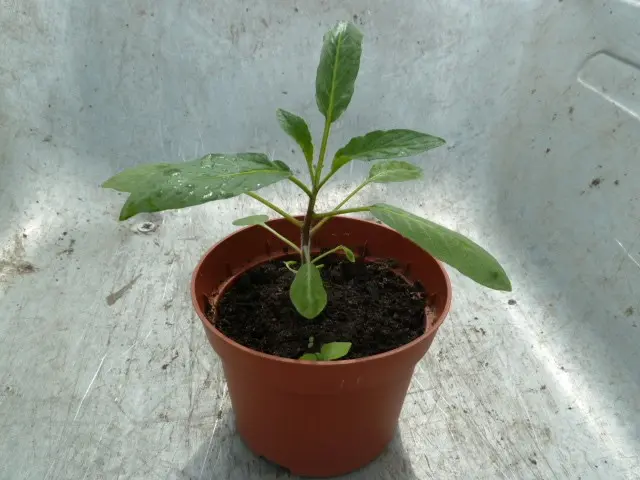
The flowers are the same as those of Pepino Consuelo, but the Ramses variety begins to ripen earlier – 110 days after germination. Hanging fruits, weighing 400-480 g, cone-shaped with a sharp top. Reviews of the Ramses pepino melon tree claim that their color is cream, with lilac strokes and stripes, but the State Register indicates a yellow-orange color. The peel of the fruit is glossy, thin, the walls are 4-5 cm thick, the sweet pulp is pleasant to taste, light yellow, with a faint melon aroma.
Productivity in the greenhouse – 5 kg / sq. m. Seed germination of good quality – 50%.
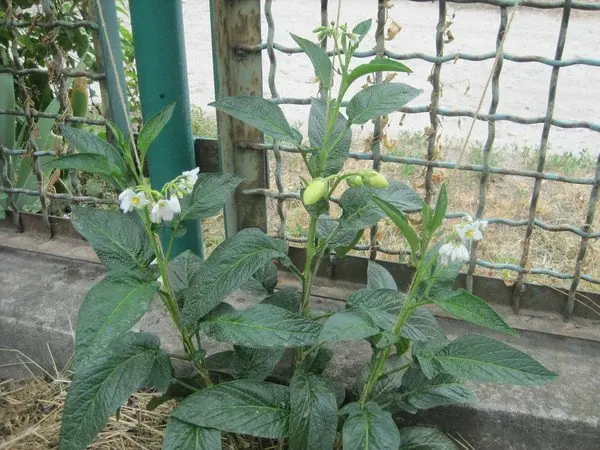
How to grow pepino at home
It is believed that pepino grown from seeds and stepchildren produce fruits of different quality. On plants propagated vegetatively, they are tastier, larger and sweeter. In the State Register, in general, it is separately indicated that pepino is propagated by cuttings, and this is a rarity in itself – usually such information is not given there.
Growing pepino from seeds at home
The seeds of the melon pear are split, and the cuttings completely inherit the characteristics of the mother plant. But what about simple gardeners? Where to take cuttings? There are pepino seeds on sale, and the stepchildren of herbaceous plants can dry out or wrinkle until they reach the mail. Even in pots, the rooted parts of soft brittle stems are inconvenient to transfer. You have to grow pepino from seed. But if you like the culture, in order to improve the taste of the fruit, you can take the one with the best fruits as a mother plant.

Before growing pepino from seeds at home, you need to know:
- Sowing is carried out from late November to early December. Only in this case will pepino bloom and set fruits of such a size that they do not crumble with the onset of a long daylight hours or at elevated (but not extreme) temperatures.
- If you sow the seeds in the spring, they will sprout well, they will actively bloom. Perhaps pepino will even set berries. But at best, single fruits will ripen, which will hide in the shade of the leaves, where the temperature is several degrees lower. Pepino ovaries will stop falling by the end of August. When there is a place for winter maintenance of a plant more than one and a half meters high, besides requiring a garter, this is not scary. Getting exotic fruits in winter is no less pleasant than in summer or autumn.
- Germination of pepino seeds is defined as low. Where did the information come from that all planting material will 100% hatch and turn into an adult plant is unknown. Perhaps someone was just lucky, the person shared his joy, and the rest picked it up. To avoid disappointment when germinating pepino seeds, do not expect miracles from them.
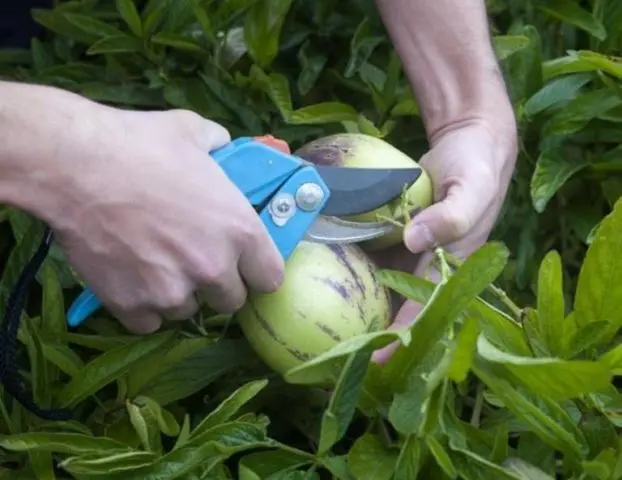
Growing pepino seedlings at home
It is believed that pepino seedlings should be grown in the same way as other nightshade crops. This is only partly true – after the appearance of two true leaves and a pick, the culture is really easy to care for. But while the seeds germinate, one should not deviate from the rules, they already have poor germination.
Experienced gardeners sow pepino on filter paper. There, the culture not only sprouts, but is also brought to the picking stage. But for beginners, it’s better not to even start growing seedlings in this way. Young pepino on cellulose is easy to overdry or pour, they are very fragile, break during transplantation, and it is difficult to separate thin roots from filter paper.
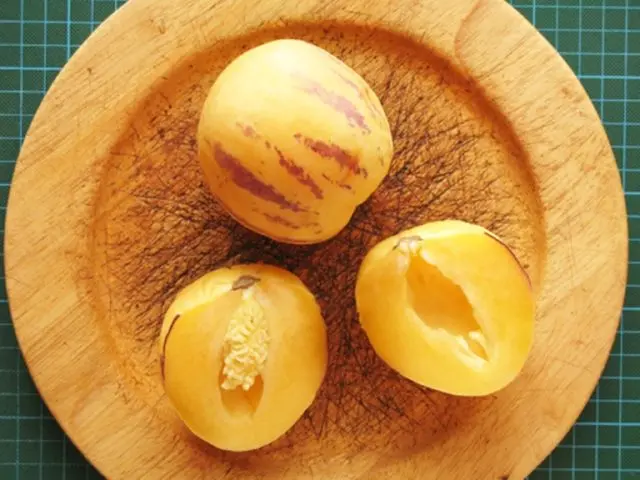
It’s better to go the traditional way:
- For pepino seedlings intended for picking, you should choose transparent dishes, for example, plastic food containers with holes made in the bottom. You can plant seeds in 2-3 pieces in peat cups. Then they will not need to dive. But in this case, you should take care of a closed transparent container, which will be used as a greenhouse for the first months.
- Drainage is laid at the bottom, covered with a layer of sand calcined in the oven or disinfected with potassium permanganate. Soil for seedlings is placed on top, compacted (so that small seeds do not fail), leveled, spilled with a solution of foundationol.Important! It is impossible to replace foundationol with potassium permanganate in this particular case.
- Seeds are laid out on the surface of the soil.
- The germination container is covered with glass or transparent film.
- Every day, the shelter is removed for ventilation, if necessary, moisten the soil from a household spray bottle.
- The temperature of the content of pepino is 25-28⁰ C. Deviations from this range are unacceptable! If it is impossible to provide a suitable temperature, it is better not to start germination.
- At a distance of 10-15 cm from the surface of the covering material, a light source is installed, and even better – a phytolamp. Illuminate 24 hours a day all the time of seed germination and before picking. Pepino, planted in individual cups, illuminate all day until the third true leaf appears.Important! As the seedlings grow, the lamp should be raised higher.

- Most seeds will hatch in a week, but some may take a month.
- A very important moment in the development of pepino is the shedding of the seed coat by the cotyledons. They cannot always free themselves and rot. Sprouts need help: arm yourself with a magnifying glass and a sterile needle, carefully remove the shell. Care must be taken as tiny pepino are very fragile.
- When the third true leaf appears, the seedlings dive into individual cups. After a week, the backlight is reduced to 16 hours a day. For seedlings planted immediately in a separate container, the lighting is reduced when 2-3 true leaves are fully opened.
- After a month, the backlight is reduced to 14 hours. By the beginning of March, they switch to natural mode, of course, if the seedlings are on the windowsill. Otherwise, the lighting conditions are made as close to natural as possible.
- The soil is watered regularly to keep it slightly moist. It should be borne in mind that with artificial lighting it dries out faster. Both a one-time lack of moisture and overflows, which can cause a black leg and death of seedlings, are unacceptable.
- The first dressing is applied two weeks after picking. Pepino, sown immediately in individual containers, is fertilized in the phase of the third true leaf. To do this, use a special dressing for seedlings or dilute the usual complex 2-3 times more than it is written in the instructions. Further fertilize every 2 weeks. From March, you can give a complete top dressing for nightshade crops. Fertilizers must be dissolved in water.Important! Pepino in a pot is watered 10-12 hours before feeding.
- The melon pear grows very slowly, when it has 6-8 true leaves, it is transshipped into a container with a volume of 700-800 ml so as not to disturb the earthen clod.
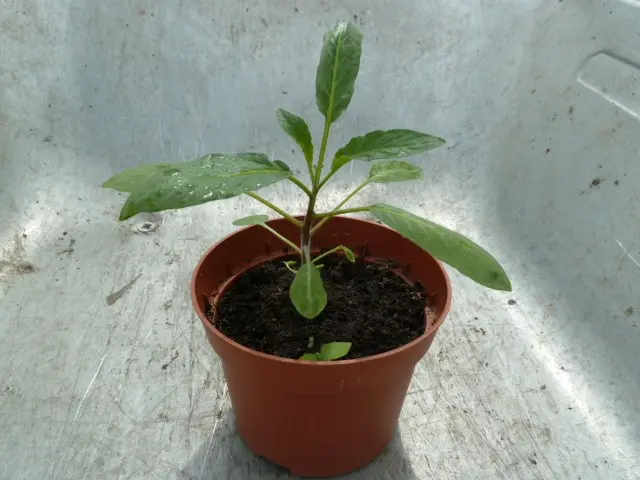
Growing pepino from cuttings
The melon pear forms many stepchildren that need to be broken out regularly. They root well and inherit maternal traits. So, even from one germinated seed per season, you can get so many young plants that it’s enough to plant a small plantation.
Pepino grown from cuttings and stepchildren develop much faster than those obtained through seedlings. It is enough to cut off the lower leaves and put a piece of the stem in water or plant in light soil. Roots are formed quickly, survival rate is high. There is no need to cover the cuttings with a film, but you need to spray often.
Pepino, taken out of the ground along with an earthy clod and planted in a pot, is easy to keep in an apartment. In the spring, cuttings are cut from the stems and rooted. Unlike the difficulties that seeds can bring, even a teenager can handle vegetative propagation of pepino.

Optimal conditions for growing pepino
The best melon pear will feel in the greenhouse. But in the absence of a winter garden, pepino is grown on window sills, in greenhouses and open ground. It is convenient to plant a crop on the site directly in large pots with a capacity of 5-10 liters. But then you need to make side holes so that excess moisture comes out through them (stagnation of water will definitely destroy the plant), feed and water with caution.
In greenhouses, growing pepino is allowed only if the temperature is controlled in it. Often there is a heat of up to 50 ° C, and this will cause the melon pear to shed its leaves and ovaries, even if they have grown enough to ripen in the summer.
In the open field, a place is selected that is illuminated by the sun only in the morning. Otherwise, the fruits will be preserved only inside the bush or where they will be covered by other plants. Flowering will continue, but viable ovaries will appear by the end of August.
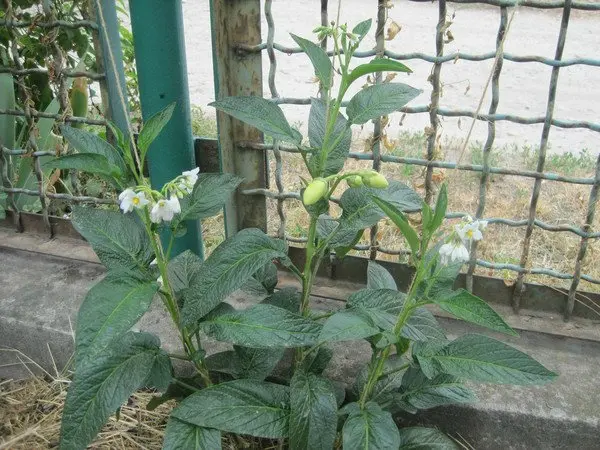
Transplanting pepino into open ground is possible no earlier than May, when not only the soil warms up, but the night temperature will be at least 10⁰ C. According to reviews, the culture can withstand a short-term decrease to 8⁰ C.
Pepino can be planted quite compactly, but do not forget that the plant can reach 1,5-2 m in height, and its shoots are fragile, grassy, less than a centimeter thick. Without a garter, a melon pear will simply collapse under its own weight, and, even if it does not break, it will begin to take root. This will already lead to the appearance of dense thickets, which, not only will bear fruit, will bloom poorly.
Stepchildren should be regularly removed, otherwise all the forces of pepino will be spent on the formation of new side shoots, and not on fruiting. The resulting cuttings take root well, grow quickly, and under good conditions can even catch up with the mother plant. You also need to remove the lower leaves to provide fresh air and facilitate watering.
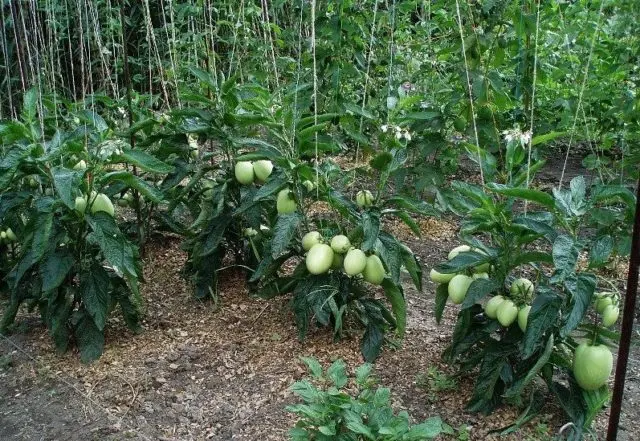
Pepino is recommended to be fertilized every 2 weeks, and it is better to use special dressings for nightshade crops. If the green mass grows quickly, and flowering does not occur, you should skip feeding – most likely, an excess of nitrogen has formed in the soil. It can even cause fruit drop.
You do not need to pinch the top of the pepino – it is an indeterminate plant with unlimited growth. Under good conditions, 2-3 shoots are formed, which go up and tie up. If you do not remove the stepchildren, there will be fewer fruits, however, according to reviews, they are much tastier than those formed on the main stem.
When the temperature drops and reaches 10⁰ C, the melon pear is removed from the street. It often happens that the fruits at this time have just begun to form or have not even reached technical ripeness. If the plant was planted directly in a pot, everything is simple: they dig it up, clean it from the ground, put it in a beautiful planter and bring it into the house.
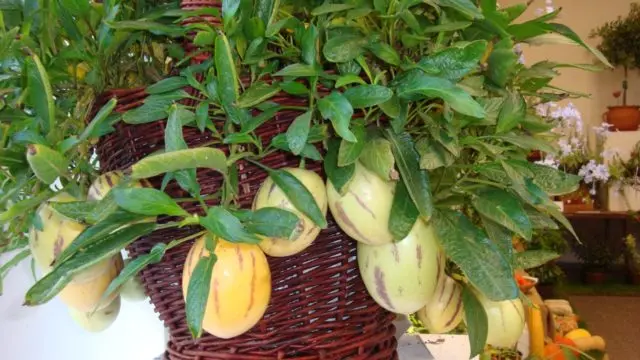
A melon pear planted in the ground without a container is carefully dug up and transplanted into a pot. The larger the earthen clod, the more likely it is that the plant, after changing the conditions of detention, will not shed its leaves and fruits.
You can put the plant on the windowsill and wait for the fruit to ripen or set new ones (the time is favorable for this). The mother plant, from which it is supposed to receive cuttings in the spring, is sent to a cool room where the temperature does not fall below 10-15⁰ C.
Diseases and pests
Pepino is susceptible to all the diseases and pests that affect nightshade crops, but he also has his own problems:
- the plant can destroy the Colorado potato beetle;
- pepino is susceptible to spider mites, aphids and whiteflies;
- seedlings with waterlogging often have a black leg;
- overflows of adult plants cause a variety of rot;
- with a lack of copper, phytophthora develops.
Pepino should be inspected regularly, if necessary, treated with appropriate fungicides or insecticides. Spraying is mandatory before transplanting into a pot. If the problems started after the pepino was brought into the house, the fungicides used are the same as those in the open field, it is recommended to choose Aktelik from insecticides.
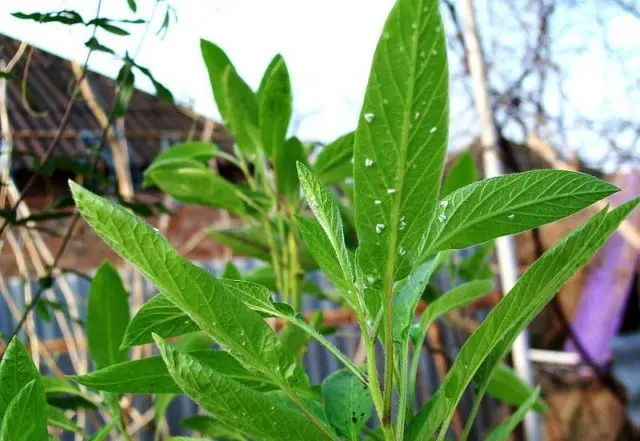
Harvesting
Usually sown in November-December, pepinos set fruit by May. In this case, the harvest falls on June-July. The fruits ripen unevenly, as flowering continues for a long time, especially if stepsons are not removed. Unfavorable conditions can cause pepino to drop ovaries and leaves that grow back over time. Even with summer flowering, single fruits do not crumble, but reach ripeness. Most often they are hidden between the leaves.
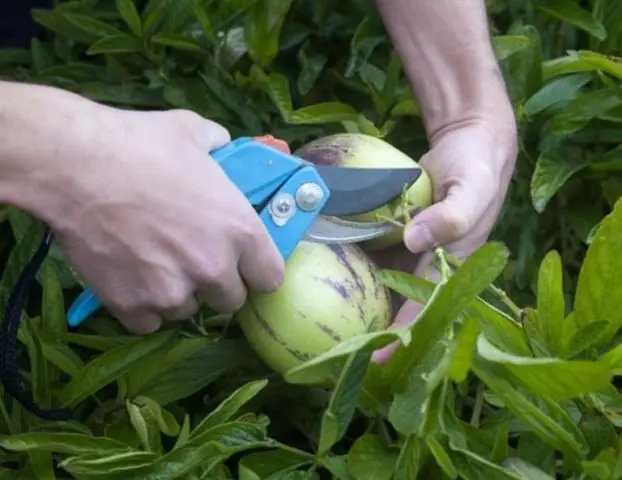
According to reviews, the taste of overripe pepino is mediocre. The fruits reach technical maturity when the peel turns cream or yellow-orange, and lilac strokes begin to appear on the sides. At this time, pepino can be removed from the bush, wrapped in paper and left to ripen in a dark, well-ventilated place. The fruits will reach consumer maturity in 1-2 months.
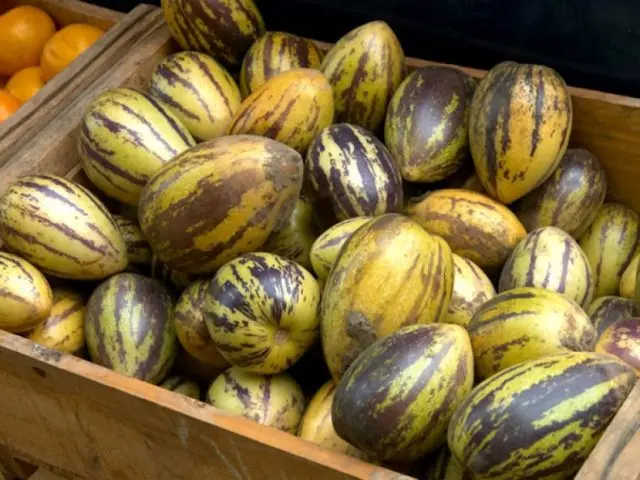
Pepino reaches full ripeness as soon as its color is fully developed, and the fruit, when pressed, is slightly squeezed.
How to eat pepino fruit
Residents of Japan and South America eat pepino fresh, removing the peel and removing the core with seeds. New Zealanders add fruits to meat, fish, prepare sauces and desserts from them. Pepino can be added to compotes, cook jams. Due to the high content of pectins, excellent jelly is obtained from the fruit.
Fruits in the stage of technical ripeness can be stored for up to 2 months until they ripen.
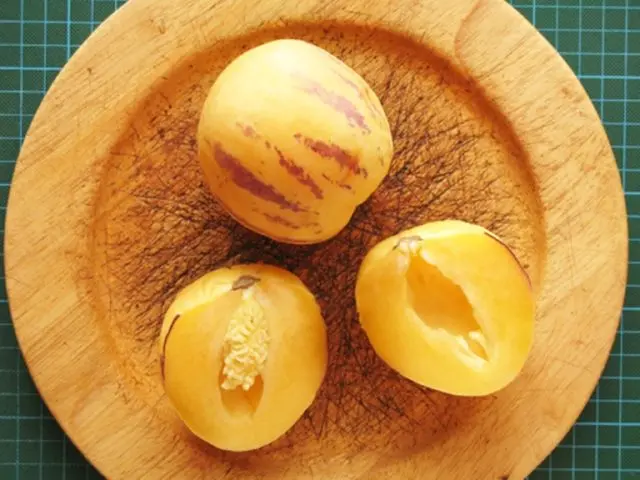
Conclusion
Growing pepino at home in the summer is like fun. Its fruits cannot particularly diversify an already rich table with vegetables and fruits. But the winter harvest will not only surprise, but also saturate the body with vitamins, the lack of which is especially felt in the cold season.










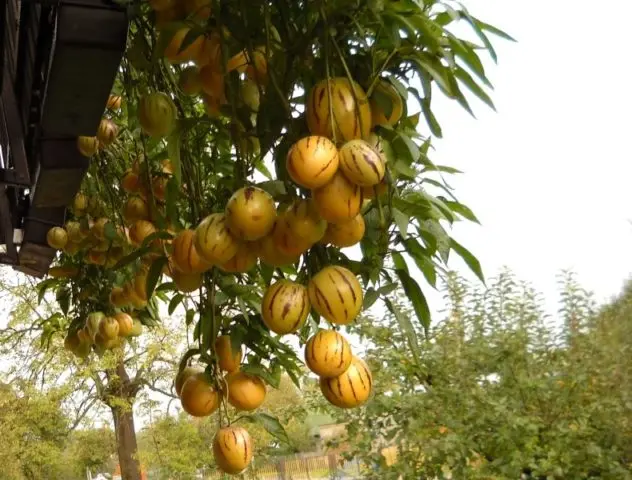
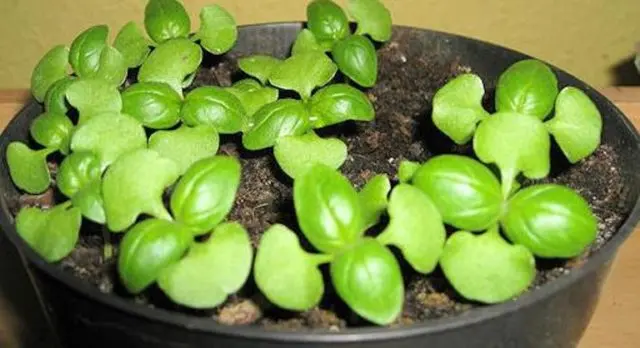
imate li pepino poz